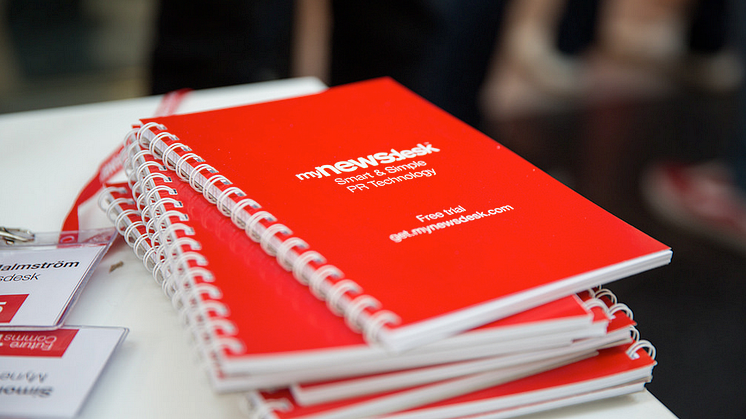
Blog post -
Search-Optimised Content: The Absolute Beginner’s Guide
Much has been written on how to “optimise” your content for better rankings on Google’s search result pages, which might lead you to believe that there’s a complex process involved. It is actually very straightforward, although it usually requires some effort. Just keep these few details in mind to improve your chances of reaching out to Google’s users.
At the most fundamental level, search engine optimisation is about being relevant; to help the search engines’ users by answering a question or solving a problem. In other words, optimising your content boils down to:
- Making it as easy as possible to find, and
- Delivering precisely what the user is looking for
As an individual entrepreneur, communicator or marketer, you probably have just the right kind of expertise to answer (search) queries that relate to your business vertical. And if you publish your content on an authority domain – either one you own or an established PR website such as Mynewsdesk – all the technical prerequisites are in place to make your content visible on Google’s result pages, provided you meet the above criteria.
Keep It Simple
The first and most important challenge lies in clarifying for both human users and search engine robots that your content is the best match for a specific search query (assuming that it is).
There is no magic formula or specific “keyword density” that will land your content on Google’s first page. An unnatural amount of keyword repetitions or peculiar wordings could have the opposite effect – primarily because it is likely to ruin the user experience.
Bear in mind that there are several ways for Google to (mathematically) measure the user experience. The most obvious example is an unusually high bounce rate, i.e. when lots of users bounce right back to the search result page to try another alternative.
Google is also getting better and better at semantic interpretation of the content, so the times when you needed to actually consider things like keyword densities are fortunately over. And, needless to say, a mediocre user experience won’t help you get through with your message even if you do manage to get some traffic.

Write What You Want to Read
 Basic writing rules go a long way: Use paragraphs, subheadings and bulleted lists liberally, to improve readability. A few large lumps of text on a page will send many users back to Google looking for alternatives. Also use images, illustrations and other elements that inspire further reading. Consider what you personally prefer to read online and what it looks like.
Basic writing rules go a long way: Use paragraphs, subheadings and bulleted lists liberally, to improve readability. A few large lumps of text on a page will send many users back to Google looking for alternatives. Also use images, illustrations and other elements that inspire further reading. Consider what you personally prefer to read online and what it looks like.
From the SEO perspective, the (HTML) title is especially important, not least because it’s normally used as your headline on the search result pages. It helps both search engines and users to find the right pages. In other words, your HTML title (often one and the same as the article headline if generated automatically) should definitely include the relevant keyword phrase, without sounding artificial.
The article itself should of course also deliver on the title’s promise, again as simply as possible without unnecessary padding. However, don’t be afraid to be thorough.
Less Is Not More
When you use Google to find information you probably want to land on a page with detailed (but not excessive) information on the topic. A page with only a few sentences rarely live up to such standards. This seems to be Google’s stance as well, as content-poor pages rarely achieve high rankings on informational queries.
Consequently, don’t hold back on the (relevant) details if you want to be visible in the search engines, whether it’s a press release, blog posts, tutorial, or almost any other article. Spending a few extra hours on content creation could determine whether you reach a handful of users or tens of thousands.
Unique Content is a Deciding Factor
 Another important box to tick when looking to rank well – or at all – is to ensure that that your content is unique, i.e. that it isn’t available elsewhere on the web. The reason is obvious: There is no point whatsoever for a search engine to list the same piece of content twice.
Another important box to tick when looking to rank well – or at all – is to ensure that that your content is unique, i.e. that it isn’t available elsewhere on the web. The reason is obvious: There is no point whatsoever for a search engine to list the same piece of content twice.
A note on press releases: Press releases are often cited on lots of websites, which is one of points and not a problem, but if you want your press release to appear in search, you should publish it on the high-authority PR website first. If you’d prefer getting traffic your own website, you can probably have both – nothing prevents you from publishing additional/related information on e.g. your company blog and linking to it from your press release.
In Summary:
- Choose the right heading/title: Include the most important keywords in the HTML title
- Include a call to action (CTA) in the title and/or in your content; read more, follow us, download PDF, contact us, etc.
- Use unique content: Google has no reason to list several identical results
- Relevance: Make sure your text delivers on what the title promises
- Keep it simple: Avoid overly technical language and acronyms when there are more accessible alternatives. A difficult text could reduce user engagement (depending on your target audience), which in turn affects its ranking potential
- Publish comprehensive material: Shorter news flashes and announcements are also appropriate in the newsroom, but are unlikely to get much external search traffic
- Use relevant images (with image descriptions), illustrations, tables and/or videos to clarify the content
Original post on: http://curamando.com/search-optimized-content-the-absolute-beginners-guide/





